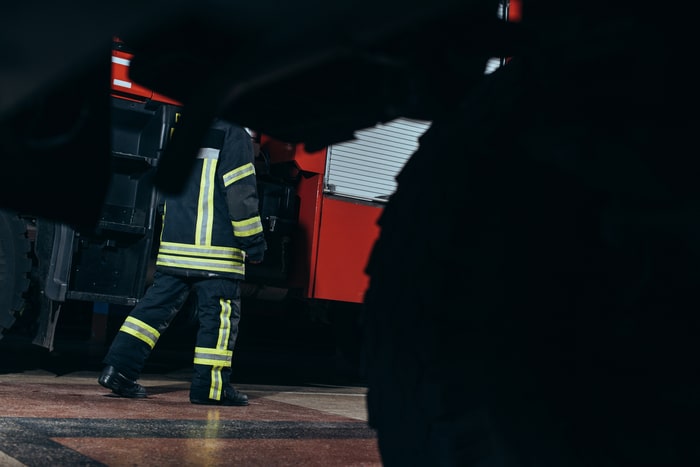
- January 12, 2025
- |security guard company
- | 0
Fire Watch Operations –
As fire risks and security threats grow in complexity, innovative technologies like drones and sensors are transforming how fire watch and security teams operate. At XPressGuards, we leverage these advanced tools to enhance surveillance, improve response times, and minimize risks. By incorporating drones and sensors into our operations, we provide unparalleled safety solutions for businesses and communities.
The Role of Drones in Fire Watch and Security Services
Drones have revolutionized the way fire watch and security teams monitor large areas and high-risk zones. These aerial devices provide numerous advantages, including:
1. Enhanced Surveillance
Drones equipped with high-definition cameras can cover extensive areas quickly, offering a bird’s-eye view of properties and landscapes. This capability is especially beneficial in wildfire-prone regions where ground visibility may be limited.
2. Thermal Imaging
Drones with thermal imaging sensors can detect heat signatures, identifying potential fire risks or hotspots before they become uncontrollable. This technology is also valuable for nighttime operations and low-visibility conditions.
3. Quick Deployment
Drones can be deployed rapidly in emergencies, enabling teams to assess situations in real-time and make informed decisions.
4. Monitoring Remote Areas
Drones excel at monitoring remote or hard-to-reach locations, such as mountainous terrain or expansive properties.
The Role of Sensors in Fire Watch and Security Operations
Sensors complement drones by providing real-time data on environmental conditions and potential threats. Key types of sensors include:
1. Smoke and Fire Detectors
These sensors monitor for smoke particles and heat, triggering early warnings that allow fire watch guards to act quickly.
2. Motion Sensors
Motion sensors detect unauthorized access or suspicious activity, alerting security guards to potential breaches.
3. Environmental Sensors
Sensors that monitor temperature, humidity, and wind conditions help fire watch teams assess wildfire risks more accurately.
4. Gas Detectors
In industrial settings, gas detectors identify hazardous leaks that could lead to fires or explosions.
How Drones and Sensors Work Together
The integration of drones and sensors creates a powerful safety network:
– Real-Time Data: Sensors provide ground-level data, while drones capture aerial perspectives.
– Rapid Response: Drones can investigate sensor alerts immediately, verifying threats and reducing false alarms.
– Comprehensive Coverage: The combination of these tools ensures no blind spots in monitoring efforts.
Case Study: Protecting a Residential Community
XPressGuards recently utilized drones and sensors to safeguard a residential community during wildfire season. Sensors placed throughout the property monitored environmental conditions, while drones conducted routine aerial patrols. When sensors detected elevated temperatures near a wooded area, drones were dispatched to investigate. This swift response helped prevent a potential fire from escalating.
The Future of Fire Watch and Security Operations
As technology continues to evolve, the integration of drones and sensors will become even more sophisticated. Advancements in artificial intelligence and automation will enhance their efficiency, making them indispensable tools for fire watch and security teams.
Drones and sensors are game-changers in fire watch and security operations, providing advanced capabilities for monitoring and risk management. At XPressGuards, we are committed to staying at the forefront of technological innovation to deliver superior safety solutions. Contact us today to learn how our drone and sensor services can protect your property and ensure peace of mind.


